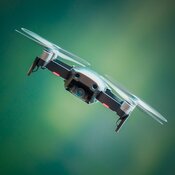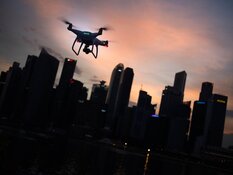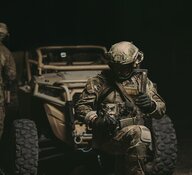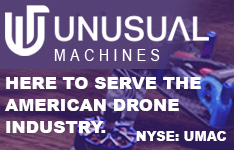"Robots do not love. They do not desire anything. They do not feel pain. They do not fear death. They are machines." — Karel Čapek, R.U.R. (1920)
Throughout my many years in the investment newsletter industry, I've encountered countless grandiose predictions.
That's why I (Rational Optimist Society cofounder Dan Steinhart) approached this monthly exploration of robotics' near-future with considerable doubt.
Despite years of excitement surrounding robotics technology, the global sector remains relatively compact and primarily concentrated on industrial machines manufactured in Japan.
Now, I'm persuaded we're experiencing the calm before the storm. That storm being the market introduction of versatile household robots.
During a recent talk, technology legend Marc Andreessen declared. . .
"I think there's a plausible argument, which Elon also believes, that robotics is going to be the biggest industry in the history of the planet."
Andreesen's declaration caught my attention. He's not known for hyperbole.
If his assessment proves accurate — and for reasons we'll investigate, it very well might — the implications couldn't be more significant.
So what's different from the previous three decades of gradual, incremental advancement in robotics?
Simply put: artificial intelligence.
Just as swift progress in AI has transformed numerous technologies, including drones and autonomous vehicles — essentially robots in different forms — innovators are now combining it with improvements in robot mechanics (sensors, motors, and materials) to create self-learning, more adaptable machines that serve a broader range of human activities.
In this exploration, we'll first examine industrial, medical, and military/law enforcement robots before addressing the world-changing competition underway to develop self-learning humanoid robots, prepared to enter your residence and free you from daily tasks.
The Robot Era Has Already Begun
Contemporary robots appear in numerous configurations, from humanoid to cylindrical, and most frequently, industrial giants capable of assembling and welding intricate machinery with unprecedented velocity and accuracy.
If you require a powerhouse that excels at repetitive functions like welding, assembly, or material handling with unmatched precision, an industrial robot exists to fulfill that need.
For example: beginning in the 1960s, America's largest automaker, General Motors, progressively transformed its production facilities. Today, they utilize over 30,000 robots, which manage 90% of the spot welding for vehicle frames and exteriors.
Beyond heavy equipment, Samsung Electronics is taking automation to unprecedented heights at its display facility in Asan, South Korea, where starting in 2026, more than 10,000 robots will manufacture over 10 million OLED panels yearly for flat-screen televisions.
The Asan complex automates more than 80% of panel assembly and inspection, reducing labor expenses and conserving the company hundreds of millions of dollars.
If you've wondered why prices for popular 55-inch OLED panels have decreased 90% since 2013, mystery solved.
Currently, it's reasonable to say every manufacturing sector already employs robots. The effect of an expanding array of enhanced AI-driven industrial robots will be substantial, with factories becoming increasingly efficient, reducing consumer costs.
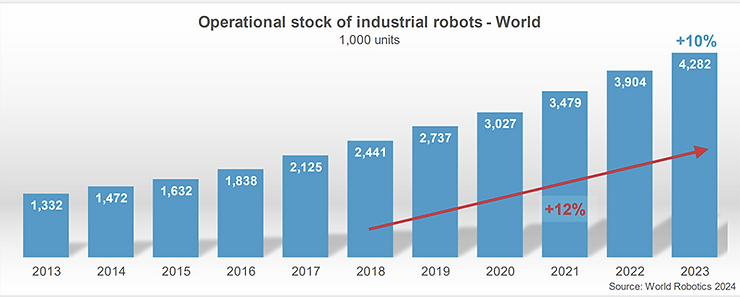
To comprehend the future, simply observe the FANUC robot factory in Oshino-mura, Japan where the nearly fully automated facility uses robots to create other robots. The factory, operating continuously, produces 11,000 sophisticated robots monthly. More about FANUC shortly.
One consequence of factory automation appears in the chart below. Since peaking in the early 1980s, US manufacturing employment has declined approximately 34%.
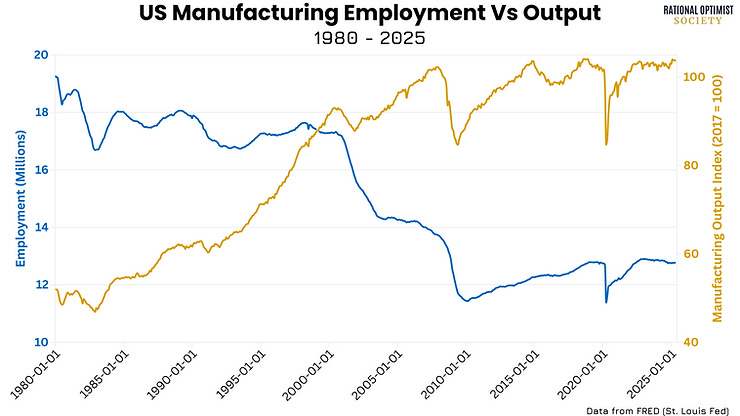
During this same period, U.S. manufacturing output has more than doubled.
Even with offshoring transferring an unknowable quantity of manufacturing positions to lower-cost nations, hundreds of thousands of U.S. manufacturing jobs have remained vacant since the Bureau of Labor Statistics began monitoring this data in 2000.
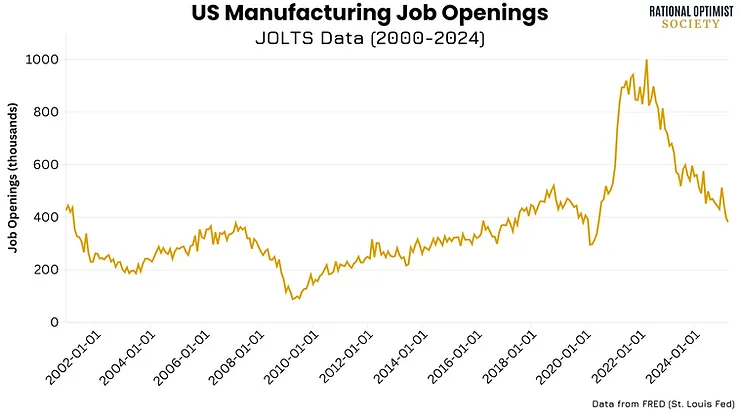
Returning manufacturing operations to domestic soil, a US government priority, will only widen the employment gap. Increasingly, robots will fill those positions.
Industrial Robots
For a straightforward yet helpful understanding of industrial robots, we'll examine the MOTOMAN from Yaskawa. Depending on requirements, these robots can be large or small and can be arranged to accommodate virtually any manufacturing specification.
Pictured at top is a multi-arm robotic MOTOMAN Waterjet cutting system. Below is a much simpler single-arm MOTOMAN model created for a small manufacturing enterprise.
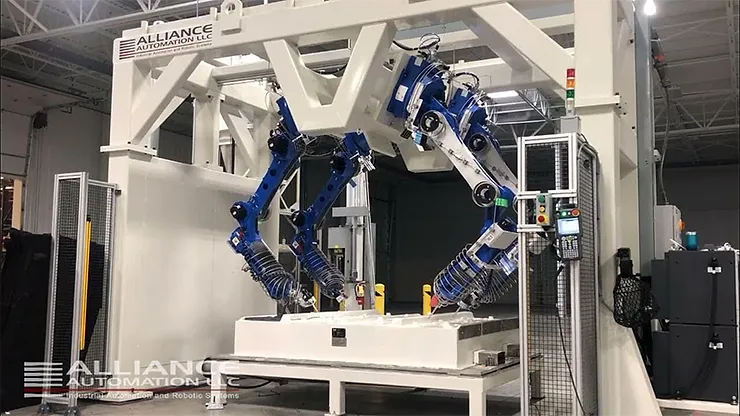

In both instances, the robots require significant initial configuration and programming. In this video, you can observe as the author struggles through the initial setup of the single-arm MOTOMAN shown above. The video is extensive, and you'll want to browse through it, but it will provide insight into the initial challenges involved.
Once configured, however, the benefits are enormous, as the robots can continuously produce goods repetitively, around the clock, with minimal human intervention. No breaks, no unions, no extra pay, no HR interactions, no celebration gatherings.
For anyone who has supervised a substantial (or even modest) workforce — or authorized payroll — it's a compelling proposition.
Among the top ten industrial robot companies by revenue, Europe claims two positions, while Japan, an early industry leader, holds the remaining eight spots.
Here are the current top five.
FANUC Corp. in Japan: The World's Largest
With yearly revenues exceeding $5.5 billion, FANUC Corp. (FANUY:OTCMKTS) leads globally in factory automation, creating a diverse range of industrial robots and associated CNC systems (Computer Numerical Control — the digital intelligence governing robots).
FANUC represents the premier manufacturer for premium robots capable of customization to accommodate various industries where you'd anticipate robots playing significant roles: automotive, electronics, and metalworking.
ABB Ltd. in Sweden/Switzerland: Operating the Largest Robot Factory in China
The Robotics & Discrete Automation division of ABB Ltd. (ABBNY:OTCMKTS; ABB:ST), a globally diversified conglomerate, offers a comprehensive portfolio of industrial robots and modular manufacturing systems, generating revenues of approximately $4.5 billion.
Significantly, responding to growing demand from Chinese manufacturers for more sophisticated robots, ABB inaugurated a robot 'mega factory' in Shanghai in 2022 — China's largest and reportedly the most advanced fully automated robot production facility worldwide.
Kuka AG: a German-Based, Chinese-Owned Company.
To counterbalance the historical lag of Chinese robot manufacturers behind global leaders in advanced robotics, Chinese enterprises have acquired substantial controlling interests in several foreign companies — including Germany's Kuka AG (KU2G:Frankfurt), purchased by China's Midea Group in 2016.
KUKA's facilities in Germany and, increasingly, China, now generate approximately $4.4 billion in annual revenue from a diverse array of robots serving the automotive, aerospace, and consumer goods sectors.
Yaskawa Electric in Japan: A Motion-Control Pioneer
Long before Yaskawa Electric Corp. (YASKY:OTCMKTS) began manufacturing robots, it established a global reputation as a pioneer in motion-control components, the servo motors, drives, and automation that characterize modern robotics.
It then leveraged that technical expertise by developing the MOTOMAN series mentioned previously.
With an estimated revenue of around $3.7 billion, the company's robots are recognized for their exceptional versatility, which makes them valuable for both large and small manufacturers.
Kawaski Heavy Industries in Japan: Japan's First Roboto Maker
With revenues just under $2 billion, Kawasaki Heavy Industries (KWHIY:OTCMKTS) has pioneered industrial robotics since the early 1960s, when it created Japan's first domestically manufactured robot, the Kawasaki-Unimate, marking the beginning of Japan's robotics industry.
More recently, Kawasaki has expanded into specialized medical and pharmaceutical automation, developing robots for tasks such as sterile drug preparation, surgical support, and laboratory automation.
Material Handling
Regarding material handling, Amazon Robotics — born from the Amazon.com Inc.'s (AMZN:NASDAQ) acquisition of Kiva Systems in 2012 — stands as the undisputed Robot King, currently deploying over 750,000 robots. For comparison, Walmart's fleet of robots totals only about 50,000.
Driven by the necessity to process 26 million individual products daily, Amazon continuously seeks new methods to automate inventory management and streamline the tedious picking and packing process.
Expect additional robotic breakthroughs from Amazon.
Competing with Amazon — or perhaps attempting to gain sufficient momentum to become an acquisition target — are companies such as RightHand Robotics and Locus Robotics, among many others. They are implementing computer vision alongside various suction devices and tactile "fingers" to transfer products from bins into packages. The robot shown here is specifically designed to load and unload trucks, a growing application.
Given the magnitude of the opportunity, the utilization of robots in manufacturing and material handling is poised to improve dramatically in both scale and sophistication.
A Word About China
While native Chinese companies now produce more robots by volume than any other nation globally, they significantly trail the world regarding manufacturing sophisticated, high-value robots.
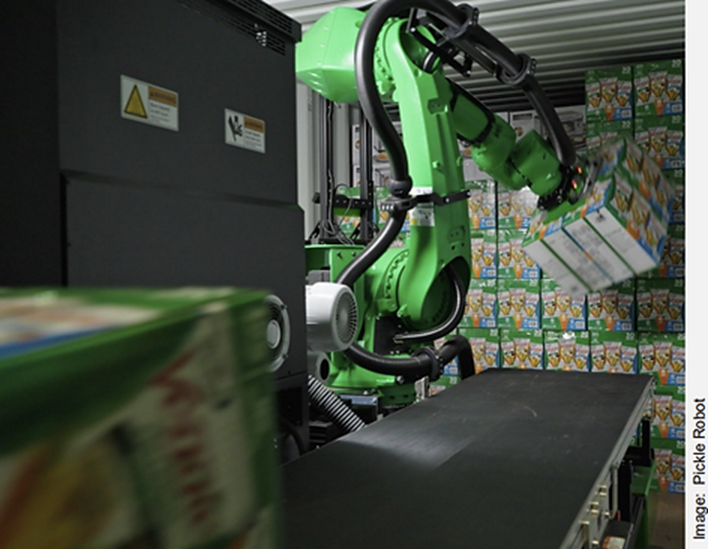
Consider SIASUN Robot & Automation Co. Ltd. (300024:SHE), China's largest robot manufacturer, which generates annual revenues of around US$500 million. That pales in comparison to industry leaders such as FANUC, whose sales run into the billions.
Yet, with China the world's leading consumer of industrial robots, the situation is evolving.
Launched in 2015, the Chinese government's Made in China 2025 initiative identified robotics as a core industry, unlocking billions in research funding and local incentives. The same initiative also drove China's rise to dominance in 'flying robots' — better known as drones.
According to the International Federation of Robotics:
"In China, robotics and automation are penetrating all levels of production. This is evidenced by its high robot density of 470 robots per 10,000 employees in manufacturing - the third highest in the world, surpassing Germany and Japan in 2023. The United States, on the other hand, ranks only tenth among the world's most automated manufacturing countries with a robot density of 295 robots per 10,000 employees."
For context, the two leaders in robot density are South Korea with 1,012 robots per 10,000 employees, and Singapore with 770 robots per 10,000 employees, indicating substantial growth potential in China, and even more in the US.
To achieve the government's objectives, Chinese companies such as Siasun, Estun Automation Co Ltd. (002747:SHE), and EFORT Intelligent Robot Co Ltd are expanding rapidly organically, and through global acquisitions such as the Midea Group's purchase of KUKA AG, noted earlier.
And they are swiftly advancing up the sophistication scale. Pictured below is the Iron robot from Chinese company Xpeng Inc. - ADR (XPEV:NYSE). It is already operating in factories and is now undergoing testing in residential settings. Keep Iron in mind as we discuss the intense competition for humanoid robots further on.
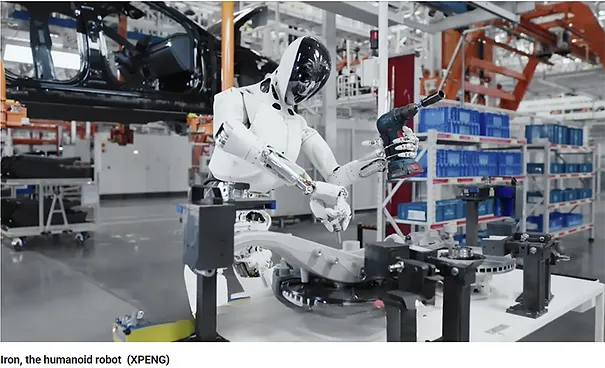
Medical Robots
In medical robotics, one company stands clearly above the rest: Intuitive Surgical Inc. (ISRG:NASDAQ), creator of the da Vinci Surgical System.
In May 1998, a physician using a da Vinci prototype conducted the world's first documented robotic-assisted surgery (RAS) at the Leipzig Heart Center in Germany. After securing FDA approval in 2000, the system rapidly became the gold standard for minimally invasive soft tissue procedures, including prostate, bladder, and uterine operations.
In 2024 alone, da Vinci systems were employed in over 2.7 million procedures globally. In the United States, more than 80% of all prostatectomies now occur with the assistance of a da Vinci robot.
Demand for Intuitive Surgical's systems continues to surge, with the company's revenues nearly doubling over the past five years.
The introduction of the da Vinci 5, launched in 2024, is helping to drive that growth. Leveraging AI, this next-generation platform offers 10,000 times more computing power than previous models and even enables tactile feedback, allowing surgeons to 'feel' tissue resistance during surgery, a previously missing element critical to reducing tissue trauma.
Today's RAS process is highly sophisticated and usually begins with MRI or CT scans that are used to build 3D digital models of the patient's anatomy. These models help the surgical team plan and even virtually rehearse the optimal approach before any incision is made.
Once finalized, the plan is uploaded into the robot's system, guiding the procedure with digital "guardrails" that eliminate hand tremors and enhance accuracy for tasks like incisions, cauterization, resection, and suturing.
During a RAS procedure, the surgeon operates from a seated console, using hand and foot controls to direct the robotic arms according to the pre-determined surgical plan. This setup reduces surgeon fatigue and enables movements that are far more stable and precise than the human hand can typically achieve.
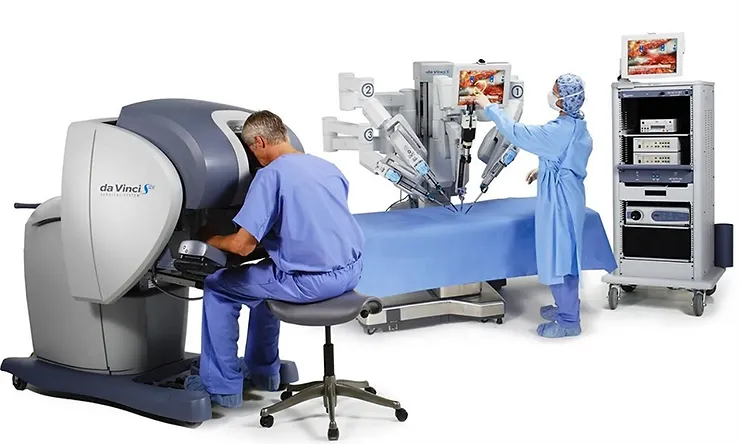
For hard-tissue surgeries such as hip and knee replacements, Stryker Corporation (SYK:NYSE) leads the field with its Mako SmartRobotics system. A physical therapist ROS cofounder David Galland knows in the UK recently told him one of her patients had a knee replaced using the Mako system and 3D-printed implants. He was able to walk out of the hospital the same day as his surgery.
The new Mako 4, launched in 2025, improves setup speed and expands into the specialized area of spinal procedures, giving Stryker a foothold in a space long dominated by UK-based Medtronic Plc. (MDT:NYSE).
Given the complexity of spinal operations, and the potential for a devastating outcome should something go wrong, the control offered by robots represents a huge step forward.
Typically, the robotic medical systems cost well over a million dollars per unit. But the cost is offset by gains in precision, efficiency, reduced fatigue, and fewer medical errors, which can be both costly and legally risky for hospitals.
Consider this: up to 16% of patients undergoing traditional prostatectomies suffer potentially life-altering complications. As robotic surgery becomes more refined and globally adopted, that rate is expected to drop dramatically.
Of course, like all transformative tech, surgical robots are riding the experience curve: over time, costs will come down, quality will go up, and access will expand.
The Innovators
The innovation in medical robots — and all robotics, for that matter — is happening so fast and furious that by the time this Deep Dive is finished, the information is likely to be out of date.
Even so, I'll quickly mention a few innovations you're likely to hear more about.
- Nanomedical Robots. Nanomedical robots—nanoscale devices ranging from 1 to 100 nanometers—are currently in pre-clinical development. Pioneered by academic institutions such as MIT and ETH Zurich, and supported by startups like Galen Data, these tiny machines aim to deliver drugs directly to targeted cells (such as cancer tumors) or perform precise tasks within the body, such as clearing arterial plaques or assisting in neural repair. While high research and development costs and significant regulatory challenges have slowed progress, the potential to transform fields like oncology and neurology continues to attract investment.
- Remote Surgeries. The first fully remote tele-surgery, known as Operation Lindbergh, was performed on September 7, 2001, when a surgeon in New York used a custom-built high-speed fiber-optic connection to operate on a patient in France. While the feasibility of remote surgery continues to be tested, particularly in countries like China, these procedures remain rare due to legitimate concerns about latency and connection stability: a momentary internet disruption could have serious consequences. As the reliability of high-speed internet connectivity improves, long-distance surgery becomes more viable and maybe even routine.
- General Hospital Support. Moxi from Diligent Robotics is already deployed in over 30 hospitals, saving nurses time by fetching and delivering various supplies, including drugs. Moxi utilizes AI to expedite learning, and sensors to avoid running into people and clutter found in hospital hallways. It can use elevators and open and close doors on its own.
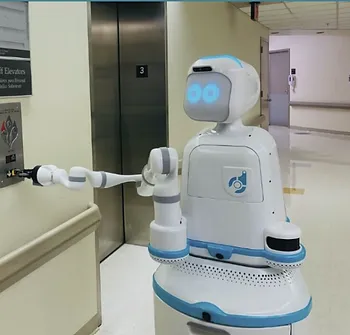
- Neuralink's R1 Robot: After a surgeon removes the top portion of the patient's skull, the purpose-built R1 Robot uses a 3D model of the brain to precisely insert the company's N1 implant — roughly the size of a quarter — along with more than 1,000 ultra-thin wires into targeted areas of the brain. Once operational, the implant's sensors capture brain signals, which are processed to help restore speech and some degree of motor function. [Read more]
"Follow the money" is a time-tested adage in both investing and forecasting the adoption of new technologies. In 2024, the global surgical robotics market was valued at approximately $7-$10 billion annually. Based on current growth trajectories and industry forecasts, that figure is expected to double or even triple in the next five years, reaching $20-$30 billion by 2030.
The biggest beneficiaries of this rapidly evolving technology are aging populations, whose need for surgical interventions is rising, just as a growing shortage of surgeons is projected. According to a recent report by the Association of American Medical Colleges, the US could face a shortfall of up to 19,000 surgeons by 2036.
At first glance that shortall may not seem catastrophic, but 19,000 surgeons performing an average of three surgeries a day, five days a week for 42 weeks a year, equals an annual shortfall of 11.97 million operations.
Medical robots are not a luxury, but a hard necessity. In the quest to make surgeons more efficient (and effective), expect to see the full automation of select surgical tasks, starting with fully automated suturing. Those robots are already in development.
Military and Law Enforcement Robots
Outside of drones, at this point most robots being deployed by the military and police are used for remote surveillance and bomb disposal.
If you want to understand the core value proposition for first responders, check out the video showing the Spot robot dog from Boston Dynamics opening a door.
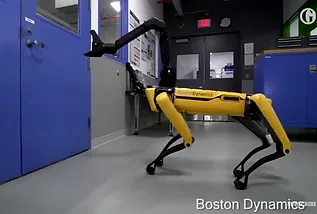
Equipped with cameras, heat sensors, chemical sniffers, communication devices and more, these robots are being sent into dangerous situations ahead of humans, greatly reducing risk.
While a bit silly looking, units such as those offered by Knightsbridge, shown here, are supplementing human patrol officers.
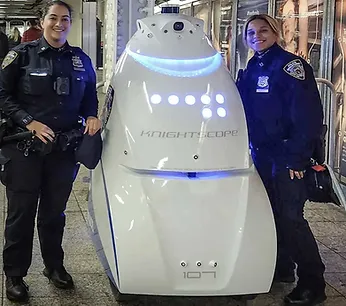
The robot is equipped with cameras and a two-way speaker system, allowing it to deter crime simply by following a suspect around and notifying them they're being recorded and that police are enroute.
According to the company, the presence of these units on premise reduces crime by almost 50%.
The Chinese are taking a different approach to the patrol function, deploying the ball-like 126 kilo (277 lb) RT-G robot from Logon Technology. According to the company, it's capable of chasing down perps at speeds of up to 35 k/hr across land, up stairs, or even across water.

The RT-G is loaded with facial recognition software and can be kitted out with non-lethal gear from tear-gas to net guns. A sound-wave dispersion device comes as an optional feature, able to disperse unruly crowds with painful sonic bursts.
Though purposely downplayed due to ethical concerns, there are also a number of companies working on lethal robots.
The appropriately named Ghost Robotics is advancing a robotic dog that looks a lot like Spot, (so much so Boston Dynamics filed a lawsuit against the company in 2022), but which offers a platform designed to be easily modded with machine guns, grenade launchers and more.

The Ghost Robot shown here has a special gun designed by SWORD Defense Systems mounted on its back.
The U.S. government is actively investing in these new automated warfighting technologies, including efforts to replace the long-serving Bradley Fighting Vehicle with a next-generation platform known as the XM30 Mechanized Infantry Combat Vehicle.
This new vehicle is being designed with "optionally manned" capabilities, meaning it can operate with a crew onboard or be controlled remotely under certain conditions. While full autonomy is not the current standard, the integration of increasingly autonomous features will expand over time as the technology matures.
As demonstrated by the deployment of drones, it's a safe bet fully automated killer robots will appear on battlefields, probably within the next decade.
Civilized society will need to determine the rules of engagement for these robots. Perhaps the optimal solution is to have them serve as mobile, intelligent sentinels, akin to smart landmines. If attackers wish to cross into their field of fire, so be it.
If there's a silver lining it may be that, unlike landmines which can torment a population for decades following a conflict, robots can be easily decommissioned and returned to the warehouse.
Moving along, let's cross back over to the sunny side of the street with a look at the rapidly evolving robotic technologies Marc Andreessen, Elon Musk, Cathie Wood, and other serious tech minds believe will soon fundamentally alter the world.
Household Robots
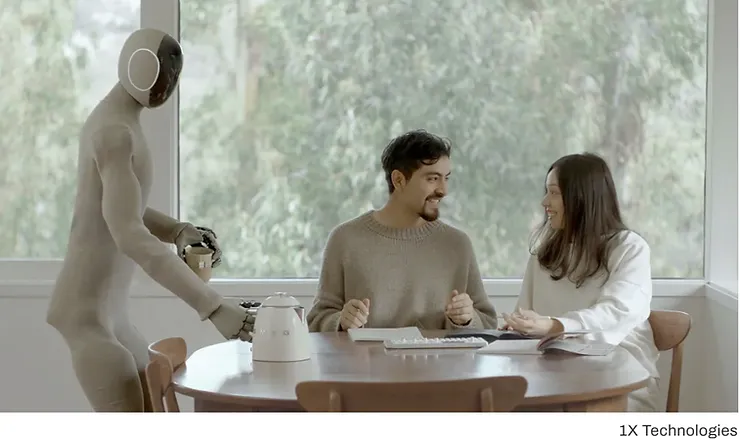
Of course, household robots are already prolific.
Dishwashers wash our dishes and robotic floor cleaners, like iRobot's Roomba, the Matic from Matic Robots are tidying up and saving people time. Robot lawnmowers are increasingly freeing up our weekends.
If the techies are right, things are about to get very intriguing with AI-powered humanoid robots designed to free humans from the tedium of most household tasks.
When you think about it, the humanoid shape for these robots makes sense because virtually everything we interact with in our daily routine — from doorknobs to drinking glasses — are optimally designed for the human form.
As brought up earlier, I started this deep dive fairly skeptical a human-like robot capable of performing virtually any household task on command would be perfected any time soon.
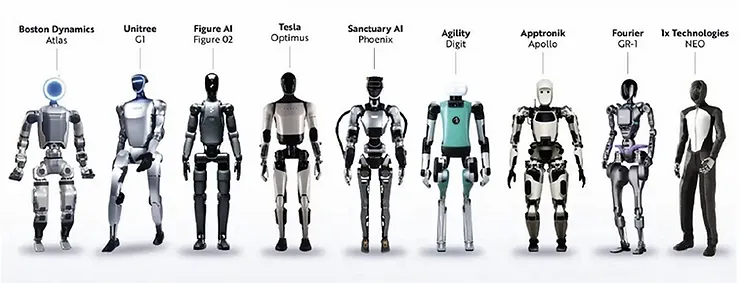 However, tech giants like Amazon, Google (GOOG), Tesla Inc. (TSLA:NASDAQ), and Nvidia Corp. (NVDA:NASDAQ) are dropping billions into the race to be first to market with exactly that kind of robot.
However, tech giants like Amazon, Google (GOOG), Tesla Inc. (TSLA:NASDAQ), and Nvidia Corp. (NVDA:NASDAQ) are dropping billions into the race to be first to market with exactly that kind of robot.
Toss into the mix dozens of well-financed start-ups and Asian robotics companies supported by their respective governments, and you have the equivalent of a space race.
What do these companies, and their supporters, know about the technology that makes them so sure?
Maybe it's the impending perfection of AI-powered "brains" — like those being developed by Physical Intelligence, a company backed by Jeff Bezos and some of the world's leading tech venture capitalists — that allow robots to learn new tasks simply by observing.
Their flagship product, π₀ (Pi Zero), is designed to enable a robot's AI-driven physical intelligence to be continuously updated and improved simply by observing, with the knowledge shared via regular updates to all the robots in the same eco-system.
Pi-Zero robots are already able to execute up to 50 motor commands per second. That's pretty close to operating in real-time (i.e. without clumsy pauses).
As mentioned, this progress is only possible thanks to the exponential gains being made in artificial intelligence. You'll notice this as a constant theme in the development plans of leading contenders in the crowded race to perfect a functional humanoid robot — a small sampling of which follows.
Reviewing the list, keep in mind that if one wins, many will win. More on that shortly.
1X Technologies
Home-friendly humanoids powered by NVIDIA-backed learning
Based in Palo Alto, California, 1X Technologies is the maker of the NEO robot, shown here with NVIDIA founder Jensen Huang.
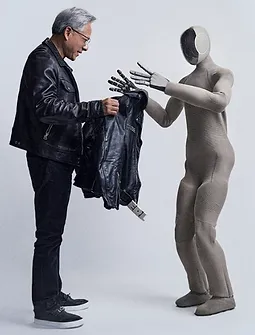
The company's collaboration with NVIDIA gives it a meaningful edge as NEO uses NVIDIA's onboard GPU alongside a vision-language transformer system (Redwood) that enables real-time object recognition and manipulation. In other words, it's learning to do what we do, simply by observing us do it in the real world.
I've watched NEO tackle everything from cooking to household chores and the results are impressive. NEO isn't some clunky lab prototype; it's increasingly nimble and purpose built to live safely among us.
Tesla
Tesla's AI ecosystem offers a major advantage
Tesla's Optimus robot is emerging as a top contender, largely due to its potential for full integration within the broader Elon Musk ecosystem. This ecosystem includes access to vast real-world training data, particularly from millions of camera-equipped Tesla vehicles operating autonomously in diverse environments. Optimus, like Tesla's self-driving system, is based on a vision-centric AI model.
Additional potential advantages could include connectivity via the Starlink satellite network and broader AI development insights from access to user behavior on X (formerly Twitter).
Like Physical Intelligence's Pi-Zero, Optimus is now capable of learning tasks simply by observing humans or watching videos. In this video, Optimus is shown performing everyday tasks: tossing trash in a bin, stirring a pot, vacuuming the floor. With each iteration, its movements grow smoother and more natural, true of all of the robot race leaders.
Apptronik
Warehouse workhorse: lifting 55 lb with human-like ease
Born out of the Human Centered Robotics Lab at the University of Texas at Austin, Apptronik has been quietly working on humanoid robotics since 2016.
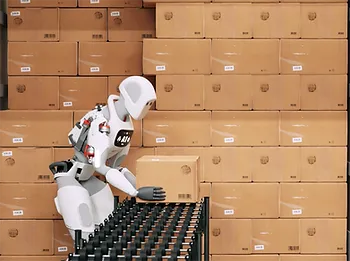
Its flagship robot, Apollo, is all about real-world applications — with a current focus on logistics. Standing 5'8" and weighing about 160 lb, Apollo can lift up to 55 lb. Apollo is already being tested for tasks like unloading trucks (shown here), palletizing goods, and navigating factory floors. When you compare this image with that of the bulky box handling machine shown earlier, the humanoid has a clear advantage.
The company, still privately held, recently raised over $350 million from backers including Google's Gradient Ventures and Jabil. Apollo can run for up to four hours on a swappable battery, and its modular design — where key components can be easily upgraded, replaced, or customized — makes it easier and more cost-effective to mass-produce, maintain, and adapt for different tasks. This flexibility is a key advantage when scaling up production or deploying the robot across varied industries.
Figure AI
AI-driven humanoids able to listen, think, and do
Figure AI, founded by Brett Adcock — founder of Archer Aviation — raised $675 million in funding from Microsoft, OpenAI, NVIDIA, Jeff Bezos, and others. With a current valuation of $2.6 billion, the company is aggressively pursuing large-scale deployment of general-purpose robots.
Figure's main advantage is that its robots are built around artificial intelligence from the ground up. They're designed to see, understand, and respond to the world using powerful AI tools developed with help from OpenAI and powered by NVIDIA's advanced computer systems.
In a recent demo video (watch here), two humanoid robots are shown working together to accomplish a task they've never encountered before. After receiving a verbal command delivered in natural, conversational English, they collaborate to complete the job.
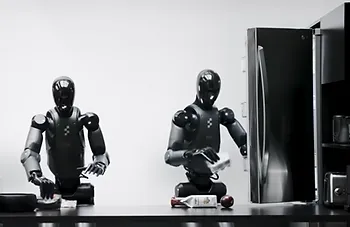
They appear to be interpreting the scene using advanced computer vision and real time reasoning. If this wasn't a remote-operated demo (and Figure claims it wasn't), it's one of the most compelling displays of embodied AI to date.
Figure's robots are already being tested in real-world environments, including in a BMW factory. And the company is in talks with UPS to test Figure robots for delivering packages.
Adcock has stated the company aims to ship tens of thousands of humanoid robots over the next few years, scaling production through its newly unveiled manufacturing facility, BotQ, located in San Jose, California. Designed to eventually produce up to 12,000 robots annually, the factory is part of a broader robot campus where some assembly work will be performed by Figure's own humanoids. While it's still early days, Figure is well-funded, well-connected, and moving fast.
Boston Dynamics
Decades ahead in agility
No discussion of the robot race is complete without mentioning Boston Dynamics, a pioneer in the field since 1992 when it was spun out of MIT.
The company's flagship humanoid robot, Atlas, has repeatedly set the bar for robotic agility and is capable of running, leaping, flipping, and even performing parkour.
Though not yet aimed at commercial applications, Atlas is influencing the development of humanoid robotics by pushing the boundaries of balance, coordination, and real-world dexterity. In a race where many robots are still learning to walk, Atlas is already crossing the finish line.
As part of its strategy to become a diversified "smart mobility solution provider," Hyundai Motor Group (HYMTF:OTCMKTS), the South Korean automaker, acquired an 80% stake in Boston Dynamics in 2021. Simply put, Hyundai is expanding beyond traditional automobiles, focusing on autonomous driving, artificial intelligence, electric vertical take-off and landing vehicles (eVTOL), smart factories, and, with Boston Dynamics, robotics. It's a bold move, sure to have caught the attention of other automakers.
A moment ago, I stated 'if one wins, many win.' By that, I mean that once we have a working humanoid robot capable of performing a wide range of household, factory and service tasks, the river of investment into the sector will turn into a flood.
That influx will allow other serious contenders to quickly catch up, sparking competition, accelerating improvements in utility, and driving down costs. Maybe I'll own an Optimus, and you'll own a NEO, and we can have them compete in a footrace around the backyard.
An Important Aside: Operators vs. AI
1X Technologies, Tesla, and others openly acknowledge that in many of their demonstration videos, humanoid robots are being remotely operated by humans. Technically speaking, that makes them more like puppets than autonomous machines.
The robotic companies are unapologetic about what some might call sleight of hand.
Why?
Because once the AI-control software and interfaces now in development reach the necessary level of sophistication, switching from human input to full AI control will be relatively straightforward. One day, it's a human operator. The next, it's AI.
It's a valid point and worth keeping in mind as the technology evolves.
Use Cases
In addition to household chores, what roles might these humanoid robots play in the reasonably near future?
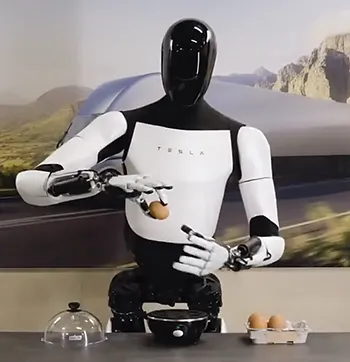
Physical Labor. As billionaire Marc Andreessen recently commented "We shouldn't be screwing screws by hand on rubber mats for 10 hours."
According to numbers provided by Figure, 50% of global GDP — about $42 trillion worth — is generated by human physical labor.
That represents a massive market for humanoid robots, whether unloading boxes from trucks, collecting garbage, doing repetitive manufacturing jobs, cleaning offices, waiting tables or, or…
In the future, if a robot can do the job, and the cost/value proposition is right, the robot will get the job.
Elder Care. Also according to data provided by Figure, there are now close to a billion elderly people worldwide needing some form of home assistance. Properly designed, a robot could provide a range of useful functions, including:
- Companionship. AI chatbots built into care robots will be able to interact on multiple levels, from providing a gentle wake-up call in the morning, to providing the news, playing games to help maintain mental acuity, recording and delivering messages to and from family members, projecting media onto walls, or just engaging in a friendly chat. The robot need not have a humanoid shape to provide companionship. This cute little fella is the TomBot, a robotic dog that responds to touch in much the same way a real dog does.

But why stop there? Robotic cats? Cuddly walking, talking Pooh Bears? Why not?
- Medical support. Monitoring activity — or lack thereof — to prevent "I've fallen and can't get up scenarios," and to call for medical intervention when necessary, are a function these robots can already provide.
As would be delivering medicines, in the right dosage, on a set schedule. Engaging in dialogue to gauge mental capabilities, or follow-ups after doctor's visits would be logical.
- Physical support. Properly designed, a care robot could assist a person out of bed, in and out of wheelchairs, or when using the bathroom. Units such as this are already in development.
In my recent Rational Optimist Podcast interview with Noland Arbaugh — the first Neuralink recipient — he shared what life is like living paralyzed from the shoulders down. Unable to perform most daily tasks without a caregiver, Noland has found new independence through Neuralink, which now allows him to operate a computer using only his mind.
During our conversation, he expressed hope that one day he might be able to control a Tesla Optimus robot with his thoughts. Imagine the possibilities: telepathically instructing Optimus to help him eat, get dressed, or perform the countless everyday tasks he currently cannot do on his own.
Providing one-on-one human support is expensive, and so we can expect well-funded hospitals to be early adopters. Then, as the price of the robots fall, to see them adopted in assisted living homes and, finally, private homes, probably on a lease basis.
In the interest of time, I will move on, leaving it to you to imagine all the many ways a fully teachable and functional humanoid robot might be pressed into service. The list is pretty much infinite.
Remaining Hurdles
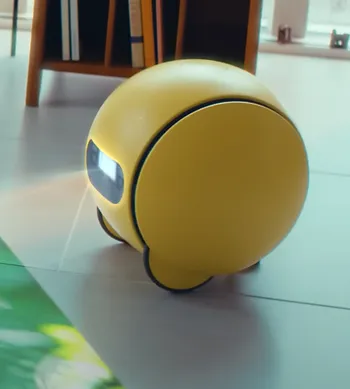
Other than the obvious technical hurdles, there's another important consideration in the robotization of Planet Earth: privacy.
Even Samsung's adorable Ballie is, at its core, an information vacuum. To function as your home assistant, it must map your house, listen to conversations, record video, and interface with your internet accounts, smart devices, and cloud services.
If such a system were to be hacked — which, without airtight security protocols, is a near certainty — it wouldn't just be a data breach. Your life would be downloaded, exposing your habits, routines, voiceprints, passwords, relationships, conversations, and personal spaces.
But privacy is just one layer. A deeper challenge is psychological: many people harbor an instinctive fear of robots, particularly those that appear too human. This is known as the "uncanny valley" effect — a sense of unease when a robot looks and moves almost like a person, but not quite. It triggers discomfort, suspicion, and even fear.
There's also concern about job displacement, government surveillance creep, and the broader implications of machines that don't just serve us, but watch, record, and adapt to us. Who owns the data they collect? What rights do you have when a robot logs your child's first words, your daily routines, or your intimate conversations?
Fortunately, we humans are good at problem-solving. We've done it before with smartphones, smart homes, and AI assistants. So, I'm convinced we'll do it again with robots.
The Potential
While the timing is uncertain — Musk's plans for the 2026 commercial launch of Optimus seem optimistic — the overarching fact is that, heavily aided by AI and a lot of cash, the pioneers in this burgeoning field are making serious inroads.
We already have robots capable of seamlessly moving like humans (or, going one better, doing backflips) and manipulating the smallest and most fragile of items. Pretty much all that's needed now is for the operational software to catch up. And if there's one thing we humans are really good at in this digital age, it's software.
While the idea of humanoid robots is kind of fun, fun is not what's driving the race to tomorrow. It's money.
Marc Andreessen, quoted earlier, has also gone on record that he sees a future with "billions, perhaps tens of billions" of robots.
According to the 2025 Big Ideas report produced by tech investor Cathy Wood of ARK Investment Management, "Generalizable robotics could generate over $26 trillion in annual revenue, created evenly between household and manufacturing robotics."
Cathy Wood's exuberance was echoed in a recent speech by NVIDIA Founder Jensen Huang who agreed robots were the next multi-trillion industry.
While it is rational to meet projections involving billions of robots and trillions of dollars with a healthy dose of skepticism, it's notable that some of the nation's leading tech investors are bandying about these sorts of numbers.
Though still "cautious," I am now considerably more inclined to believe we are on the verge of the New Age of Robotics.
For those of you still skeptical, let's play a simple mind game. Imagine the world 100 years from now. Do you think virtually all heavy manufacturing and material handling will be fully automated? The answer is clearly yes.
Do you think humanoid robots, already within throwing distance of being fundamentally useful, will be a part of most households in 100 years? Again, I think the answer is yes.
Which begs the question, "When?"
As we often reflect upon in our weekly Rational Optimist Society communiques, after years where progress seemed confined to the virtual realm, the innovators are once again shaping the physical world with bold inventions and ingenuity.
We're curing diseases once thought incurable. We're building cars that drive themselves. And we're catching skyscraper-sized rockets — midair — with precision-engineered robotic arms.
With exponential advances in artificial intelligence now transforming, well, everything… isn't it rational to believe we are living in the era when the breakthrough in humanoid robots will finally occur?
I now believe it is.
You can view more at the Rational Optimists here.
| Want to be the first to know about interesting Robotics and Special Situations investment ideas? Sign up to receive the FREE Streetwise Reports' newsletter. | Subscribe |
Important Disclosures:
- Dan Steinhart: I, or members of my immediate household or family, own securities of: None. My company has a financial relationship with: None. My company has purchased stocks mentioned in this article for my management clients: None. I determined which companies would be included in this article based on my research and understanding of the sector.
- Statements and opinions expressed are the opinions of the author and not of Streetwise Reports, Street Smart, or their officers. The author is wholly responsible for the accuracy of the statements. Streetwise Reports was not paid by the author to publish or syndicate this article. Streetwise Reports requires contributing authors to disclose any shareholdings in, or economic relationships with, companies that they write about. Any disclosures from the author can be found below. Streetwise Reports relies upon the authors to accurately provide this information and Streetwise Reports has no means of verifying its accuracy.
- This article does not constitute investment advice and is not a solicitation for any investment. Streetwise Reports does not render general or specific investment advice and the information on Streetwise Reports should not be considered a recommendation to buy or sell any security. Each reader is encouraged to consult with his or her personal financial adviser and perform their own comprehensive investment research. By opening this page, each reader accepts and agrees to Streetwise Reports' terms of use and full legal disclaimer. Streetwise Reports does not endorse or recommend the business, products, services or securities of any company.
- This article does not constitute medical advice. Officers, employees and contributors to Streetwise Reports are not licensed medical professionals. Readers should always contact their healthcare professionals for medical advice.
For additional disclosures, please click here.


